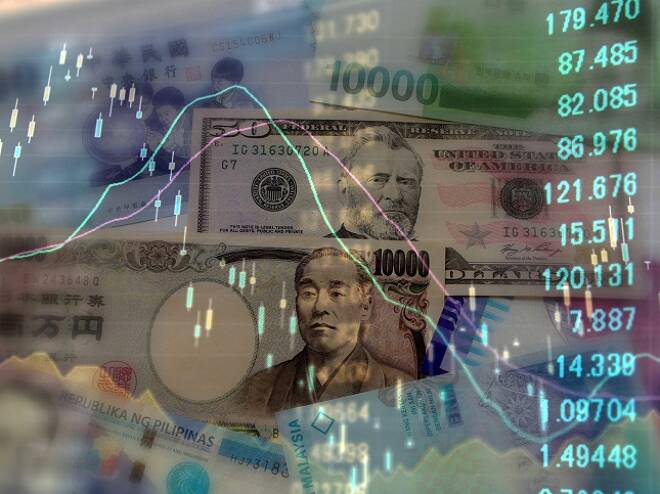Advertisement
Advertisement
USD/JPY Fundamental Weekly Forecast – Price Action Indicates Fed is in Driver’s Seat
By:
The divergence in the monetary policies of the Fed and BOJ can’t be any clearer. This is why the USD/JPY is bullish. What stands out after last week’s performance is that the Fed is ready to raise rates again in December while the BOJ is still looking at downside risks to the economy.
The divergence between the monetary policies of the hawkish U.S. Federal Reserve and the dovish Bank of Japan helped drive the Dollar/Yen to its highest level since December 21. The widely expected Fed rate hike last week also widened the spread between U.S. Government bond yields and Japanese Government bond yields, making the dollar a more attractive investment.
In other news, it was revealed in the Bank of Japan summary of opinions that policymakers debated in September the potential of making further tweaks to their massive stimulus program with one member seeing room to make monetary policy more flexible. Another BOJ policymaker called on the need to deepen debate within the nine-member board on the time frame for maintaining the central bank’s ultra-loose policy, the summary showed.
For the week, the USD/JPY settled at 113.685, up 1.137 or +1.01%.
Monetary Policy Divergence Continues
The Hawkish Fed
The U.S. Federal Reserve increased the target for the bank’s benchmark by 0.25%, to a range of 2%-2.25%. A majority of Federal Open Market Committee members also said they expect another rise before the end of the year. This was also the bank’s eighth rate hike since 2015, continuing its policy of gradual rate hikes.
FOMC members led by Chairman Jerome Powell said the economy is strong enough that aggressive stimulus is no longer necessary. This confidence was shown by the Fed ending its description of its policy as “accommodative”.
Powell also said the rate hike reflected the Fed’s confidence in the U.S. economy, describing it as a “particularly bright moment”.
Fed officials now expect the U.S. economy to grow by 3.1% this year, faster than the 2.8% forecast in March, according to the projections released after the meeting. Their predictions for inflation remained unchanged at around 2%.
The FOMC forecasts showed Fed officials expect about three rate hikes in 2019 and one more in 2020, which would lift the central bank’s important Fed funds rate to about 3.4% that year.
The Dovish BOJ
By contrast as revealed in Friday’s Bank of Japan Summary of Opinions, policy board members of the BOJ are becoming increasing concerned about downside risks to the economy and prices, including the potential impact of trade frictions.
“With regard to the risk balance in the global economy, there likely remain growing downside risks stemming from trade friction between such economies as the United States and China as well as from fluctuations in financial markets,” one of the BOJ’s nine policy board members said, according to the summary of the board’s meeting held on September 18-19.
The BOJ stood pat on policy at the September meeting after making a number of tweaks in July to prepare for a longer-than-expected fight to lift inflation, which has yet to reach the bank’s 2% target. It also reiterated that the bank will allow the 10-year Japanese government bond yield to move in a wider range in a bid to revive JGB trading.
Forecast
The divergence in the monetary policies of the Fed and BOJ can’t be any clearer. This is why the USD/JPY is bullish. What stands out after last week’s performance is that the Fed is ready to raise rates again in December while the BOJ is still looking at downside risks to the economy.
There is economic data from Japan this week, but if the BOJ is still concerned about the strength of the economy then I don’t think investors are going to put much faith in the numbers. This likely means we’ll see a muted reaction to the reports.
Early Monday, the Tankan Large Manufacturers Index is expected to come in at 22, up slightly from 21. The next report is Consumer Confidence. It is forecast at 43.4, up slightly from 43.3. Call me when it gets over 50. The rest of the week is peppered with minor reports on household spending, foreign exchange reserves and average cash earnings. Medium reports include leading economic index and coincident index.
The chart pattern indicates the market is being driven by strong technical momentum. It seems the higher the market goes, the faster it moves. After trading in an elongated range for close to a year, investors seem to finally be taking the Fed seriously as it moves more aggressively to reduce its balance sheet.
The weekly chart indicates that a move over 113.745 this week could attract enough buyers to drive the USD/JPY to at least 114.728.
About the Author
James Hyerczykauthor
James Hyerczyk is a U.S. based seasoned technical analyst and educator with over 40 years of experience in market analysis and trading, specializing in chart patterns and price movement. He is the author of two books on technical analysis and has a background in both futures and stock markets.
Advertisement
